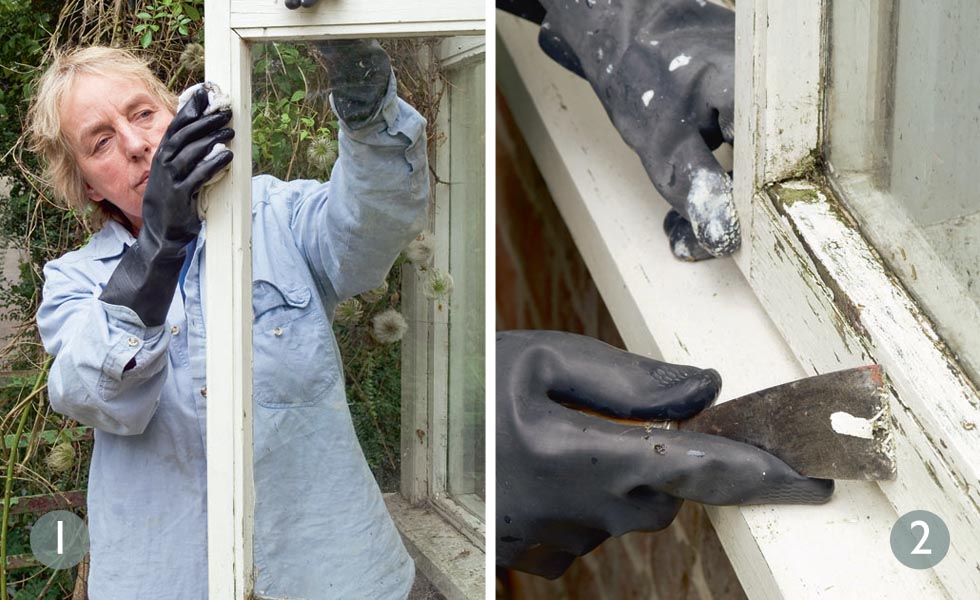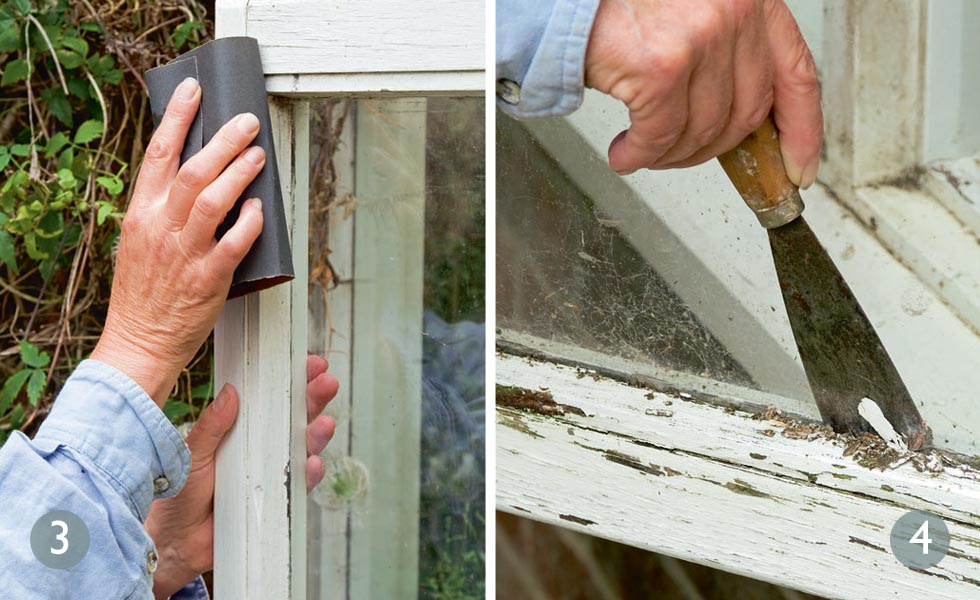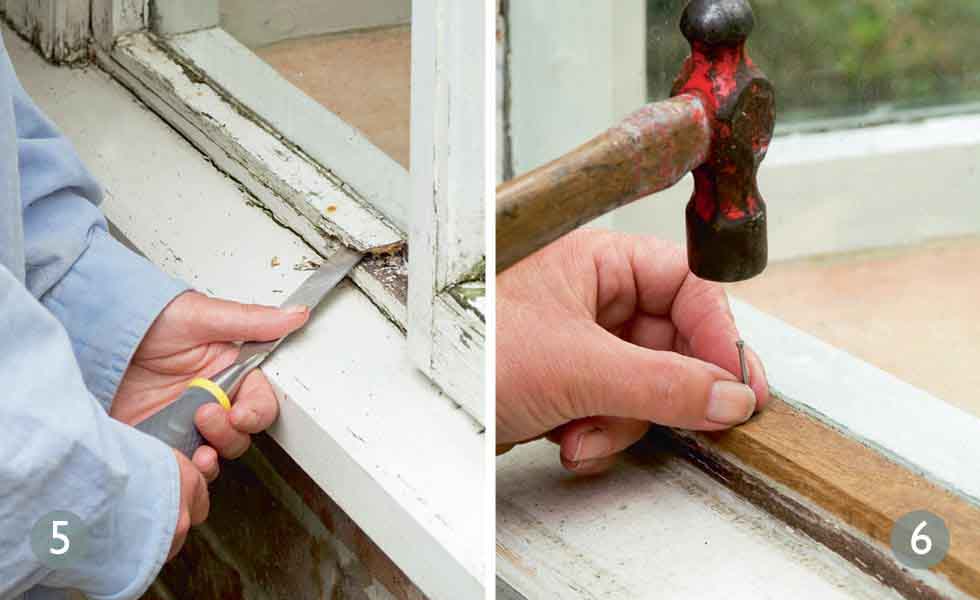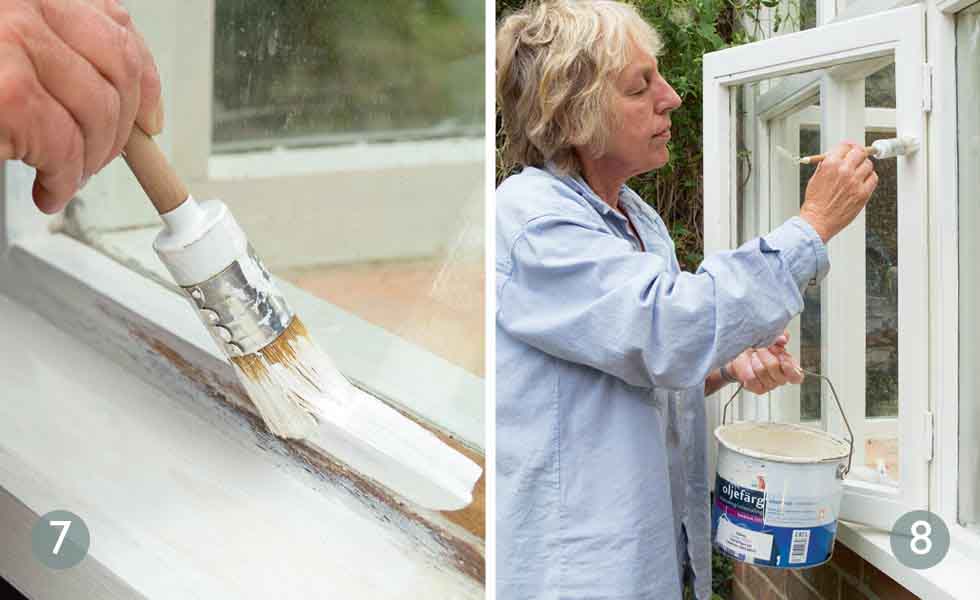How to repaint and revive outdoor woodwork
In this step-by-step guide, DIY expert Helaine Clare shows how to repaint and revive outdoor woodwork

While it can be tempting to overlook the decoration and maintenance of our home's exteriors, in preference of making the inside feel cosy and inviting, it's important to keep on top of the exterior, too.
The warmer months are the best times to check if any of the outdoor woodwork on your home is in need of repainting or reviving. Maintaining woodwork regularly is a wise move, since major repairs or replacement are both much more costly. Turn particular attention to doors and windows, as cold, damp periods can play havoc with outdoor paintwork.
This is a easy restoration that can be completed by most competent DIYers when using our step by step guide to how to repaint and revive outdoor woodwork.
For more decorating tips and advice, visit our dedicated decorating hub page; for more information about painting your house inside and out, see our expert guide.
How to restore and repaint your outdoor woodwork
If there are small areas of decay, saturate them with wood preservative and, when dry, treat with wood hardener. Allow the wood to cure, then apply wood filler and smooth with abrasive paper. Larger patches of decay can be patch repaired. Conserve as much original wood as possible.
You will need:
- Heavy-duty rubber gloves
- Sugar soap
- Scraper
- Wet and dry abrasive paper
- Putty
- Nail set
- Paintbrushes
- Oil sealer, wood primer and exterior wood paint. Eco-friendly Beckers’ products are highly durable and provide maximum protection in an exposed location: Beckers’ Perfekt Grundolja oil sealer, Perfekt Tragrund primer, Oljefärg V paint
1. Wash down joinery
Dissolve some sugar soap in hot water and, wearing gloves, wash down the windows using a cloth or plastic scouring pad. Rinse well with plenty of fresh clean water. If there is mildew or algae affecting the outdoor woodwork apply sterilising solution. Leave for 24 hours and wash off thoroughly.
Get small space home decor ideas, celeb inspiration, DIY tips and more, straight to your inbox!

2. Remove old and peeling paint
Scrape away all loose and flaking paint from the outdoor woodwork to create a good sound substrate for the new paint. Ideally, old thick and cracked paint layers are best removed. If using a chemical paint stripper ensure you thoroughly neutralise it afterwards or it can have a detrimental effect on the new outdoor paintwork.

3. Create a ‘key’ for new paint
Existing paint on outdoor woodwork can be painted over provided it is sound. Shiny paint must be dulled to provide a good key for the new paint. Rub over with coarse abrasive paper. Use wet and dry paper with water to prevent dusty conditions, especially if the paint was applied before the mid-1960s when lead was often used.
4. Take out crumbling putty
In this window the glass has been set in a bed of linseed putty. Decayed putty must be raked out and replaced. Failure to do this may well result in wood rot as condensation collecting on the inside runs down and soaks into the frame. Use the corner of a scraper to remove the crumbling putty. Press fresh putty firmly into the gap.

5. Replace rotten beading
If the beading at the bottom is rotten beyond repair, carefully prise it up with a chisel. Use it as a template to cut a replacement. This is the most vulnerable part of the window so give it some extra protection from the elements with an application of Beckers’ Perfekt Grundolja impregnation oil sealer.
6. Replace and apply wood filler
Tack the new beading in place. Knock nail heads just below the surface with a nail set. Overfill with wood filler and, when completely dry, smooth flush with glasspaper. To avoid scratching and damaging the wood, always rub the glasspaper with, as opposed to across, the grain.

7. Apply first coat of paint
Unpainted wood ends and joints should first be primed with oil sealer. Then prime the whole surface area with wood primer. On a warm, dry, wind-free day apply the initial coat of paint. The surface should be touch-dry in about two hours.
8. Apply final coats of paint
Allow four to six hours before applying the next coat paint; if necessary apply a third coat afterwards.
When to repaint and repair outdoor woodwork
- Spring is a good time to tackle joinery maintenance jobs. Hot summer days can send temperatures above paint manufacturers’ recommended working temperatures. There is also the inconvenience of flying insects spoiling newly painted surfaces.
- Do not put off repainting outdoor woodwork until the autumn. Once you embark on the preparation and find a scraper slides straight through decayed wood, a straightforward paint job can suddenly involves major carpentry first.
- Wooden windows can usually be repaired at less cost than the expense of having new ones installed.